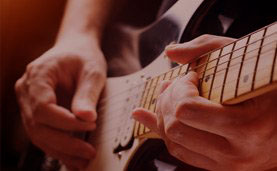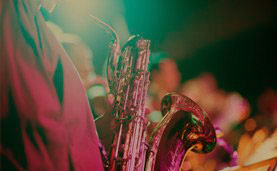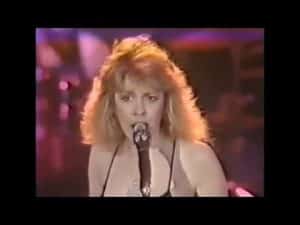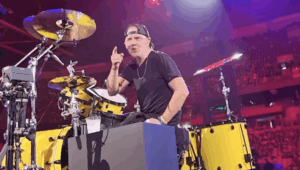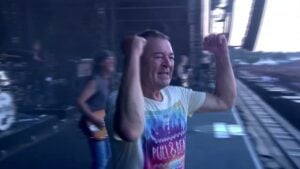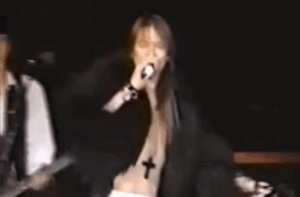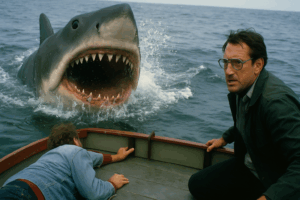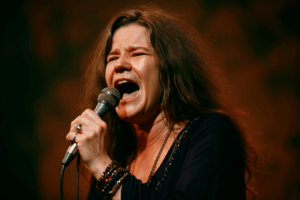On This Day in 1970: Jimi Hendrix Played His Final Show—and Faced a Hostile Crowd

via Classic Rock In Pics @crockpics / X
On September 6, 1970, The Jimi Hendrix Experience stepped onto a rain-soaked stage in Germany for what would unknowingly become their last show together. The setting was the Love and Peace Festival on the Baltic island of Fehmarn, a gathering that was meant to echo Woodstock’s spirit but instead became a storm-ridden ordeal. The 25,000 fans who braved the conditions were already restless, frustrated, and drenched when Hendrix and his band arrived.
The atmosphere was far from welcoming. Instead of applause, the trio was met with boos from the exhausted audience. For a moment, it looked as if the night might turn sour before it even began. Yet Hendrix, known for his cool composure and razor-sharp wit, handled the hostility with a quip that turned the jeers into part of the show itself. His remark—asking the crowd to boo in key—was more than humor; it was his way of seizing control of a tense moment.
What unfolded that night was both chaotic and electrifying, a fitting reflection of the contradictions in Hendrix’s career. In the midst of mud, rain, and heckling, the guitarist delivered a performance that would be remembered not only for its music but also for its historic finality.
The Festival That Fell Apart
The Love and Peace Festival had been conceived as Germany’s answer to Woodstock, promising three days of music, unity, and countercultural celebration. Unfortunately, the reality fell short of the vision. The infrastructure wasn’t prepared for tens of thousands of attendees, leading to poor accommodations and mounting frustrations. The relentless rain turned the grounds into a sea of mud, compounding the discomfort.
Technical difficulties followed. Electrical hazards from the storm delayed performances, creating hours of uncertainty. Bands scheduled to appear were forced to shift times, and the audience’s patience thinned as the festival fell further and further behind schedule. For those who had camped out overnight, soaked and cold, the anger began to boil over.
By the time Hendrix and his band took the stage, the crowd was on edge. The boos were less about Hendrix personally and more about the culmination of the weekend’s mismanagement. Still, the hostility created a backdrop of tension that made the performance both risky and unforgettable.
View this post on Instagram
Hendrix Wins the Crowd
Despite the shaky start, Hendrix and The Experience did what they had always done best: they let the music speak louder than anything else. Opening with fiery confidence, they tore through a set that included “Purple Haze,” “All Along the Watchtower,” and “Voodoo Child (Slight Return).” The raw power of the music cut through the damp, weary mood, reminding the audience why Hendrix was already a legend at just 27 years old.
The boos quickly shifted to cheers. Hendrix’s showmanship and mastery of the guitar melted away the hostility, turning a hostile audience into a captivated one. What began as a difficult night transformed into a triumph, a testament to his ability to command a stage under even the harshest circumstances.
When the band took their final bow, the mood had shifted entirely. The audience, once impatient and jeering, left with the memory of having witnessed one of the greatest live performers in history. None of them could have known it would be the last time Hendrix would ever play with his iconic band.
Days Before Tragedy
Just twelve days after that final show, Hendrix’s life came to an abrupt and tragic end. On September 18, 1970, he was found unresponsive in his London apartment by his girlfriend, Monika Dannemann. Despite the efforts of paramedics and doctors, he was pronounced dead at the age of 27, joining the so-called “27 Club” of musicians who died at that young age.
Though he gave one final impromptu performance at Ronnie Scott’s Jazz Club with Eric Burdon and War, it was a casual jam rather than a full concert. The Love and Peace Festival, despite its flaws, would forever be remembered as the closing chapter for The Jimi Hendrix Experience.
Looking back, the hostility of the crowd and the chaos of the festival almost seem symbolic. Hendrix’s career had always been about breaking boundaries and confronting challenges with artistry and defiance. His last show was no exception—proof that even in the face of boos, storms, and uncertainty, he could still rise above it all with music that spoke louder than words.

